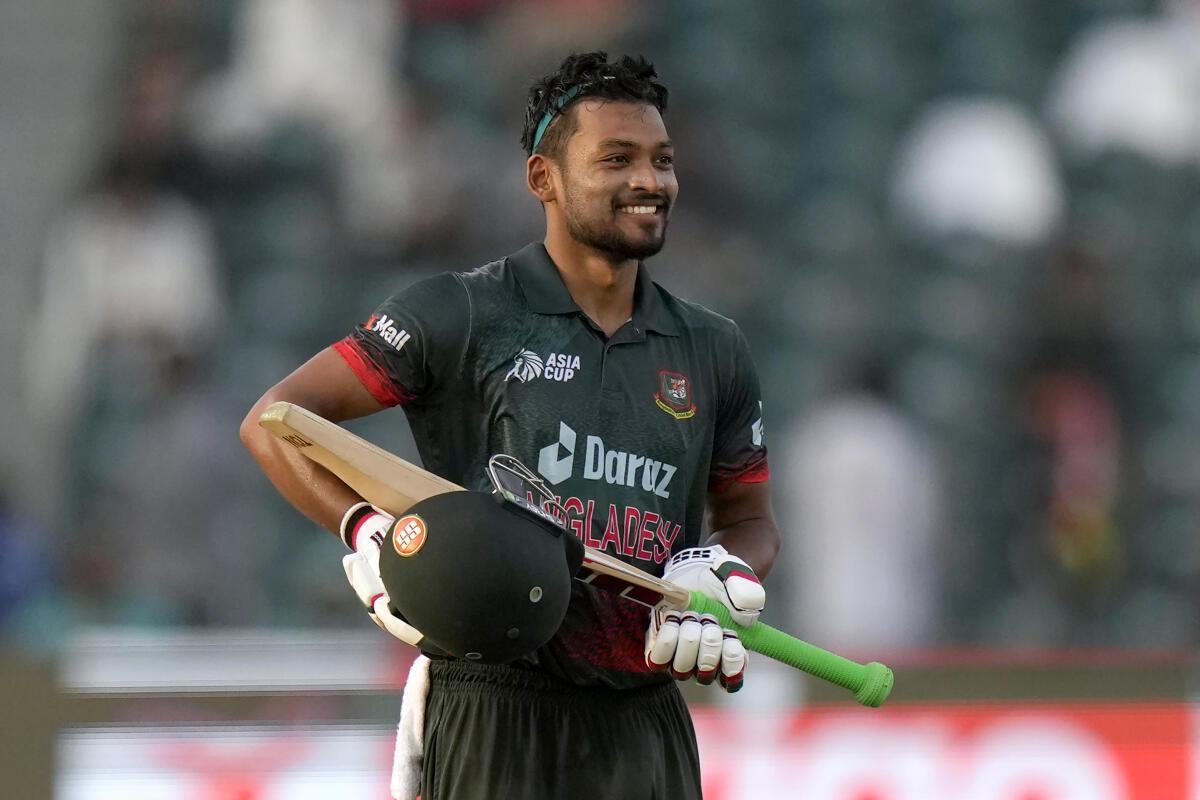
The Bangladesh Cricket Board (BCB), on Monday (February 13), named Najmul Hossain Shanto as the Bangladesh captain across all three formats for the next one year. With little clarity over veteran allrounder Shakib Al Hasan’s availability, the BCB decided to take the big call in order to provide stability to the team.
BCB president Nazmul Hasan announced the decision of appointing Najmul Hossain Shanto as the captain. The decision was taken at the board directors meeting at the Sher-e-Bangla National Stadium on Monday. Hasan stated that the BCB took the decision due to the lack of clarity surrounding Shakib al Hasan’s availability because of an eye problem.
“We have decided to appoint Najmul Hossain Shanto across all formats. He will serve the national team as skipper this year,” Hasan was quoted as saying by Cricbuzz.
“I have talked to Shakib. His eye issue is still causing problems. There is some uncertainty regarding his participation in Sri Lanka. The World Cup is very near. So we didn’t want to take any chance.
“We are not sure about Shakib’s availability and that is why we picked Shanto (Najmul) for all three formats,” he added.
Coach backs Najmul Hossain Shanto as captain:
Earlier, Bangladesh head coach Chandika Hathurusingha had thrown his support behind Najmul Hossain Shanto, saying that it was time to make the batsman the long-term captain of the team. The former Sri Lanka head coach was impressed with the player’s leadership quality when he led the side in absence of Shakib.
“The attitude of the players, this young group had no fear. They wanted to compete in the middle,” Hathurusingha had said in December last year. “The other thing… the leadership of Shanto. Outstanding. He was tactically spot on, and very clear with the messages with the players, what he expects from them. And I thought we did the basics longer than before.”
Najmul Hossain Shanto has represented Bangladesh in 25 Tests, 42 ODIs and 28 T20Is so far. He has scored over 3000 runs in international cricket with the help of seven centuries and 14 half-centuries.


